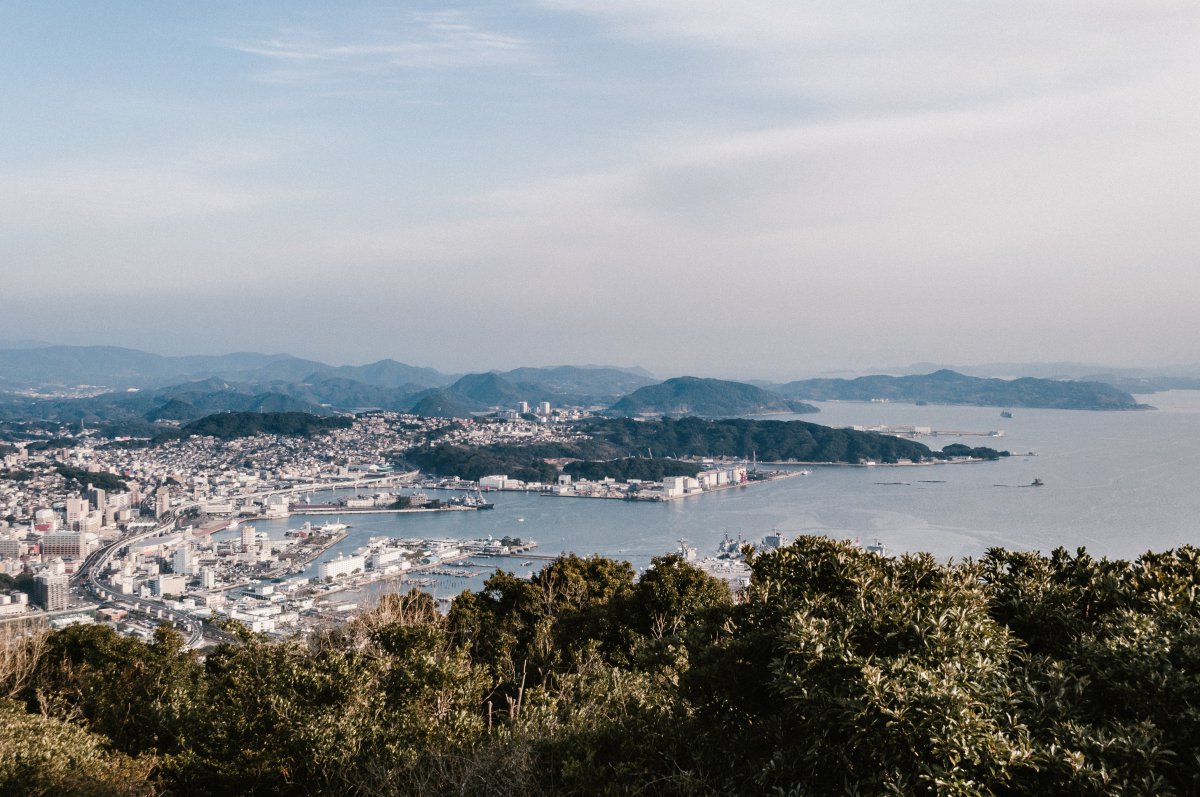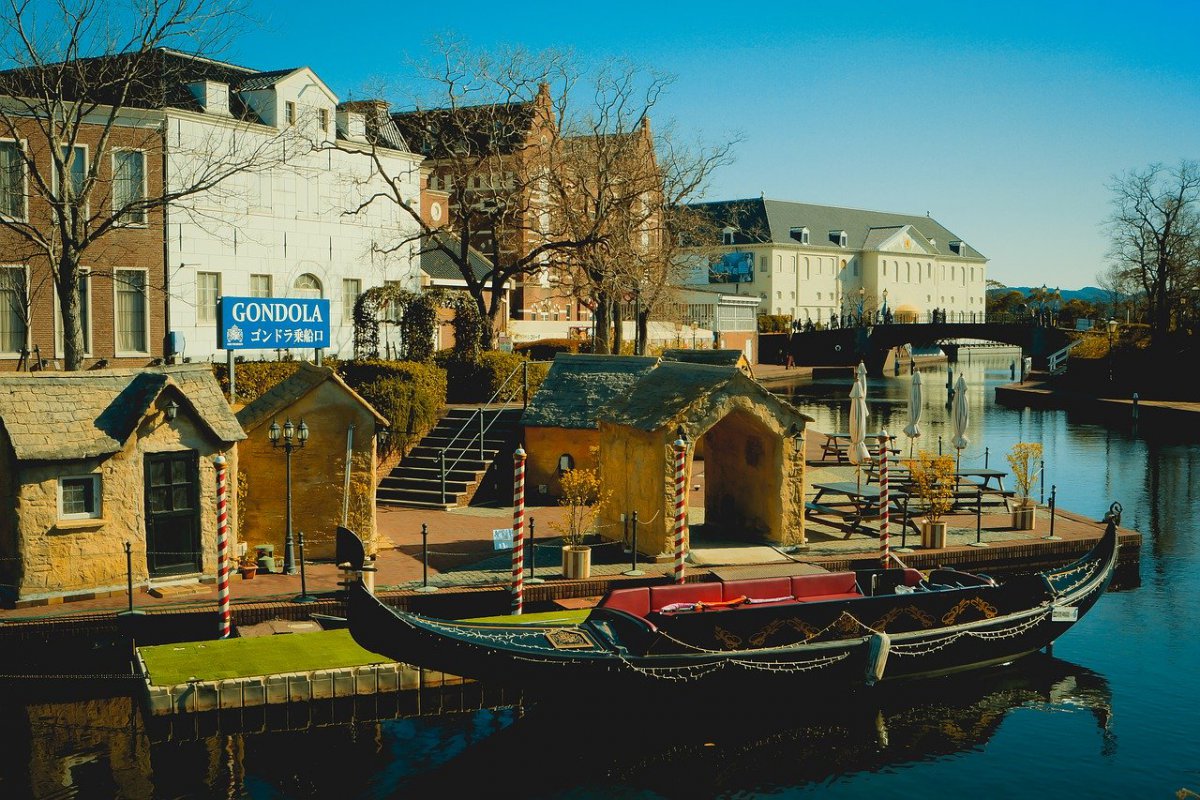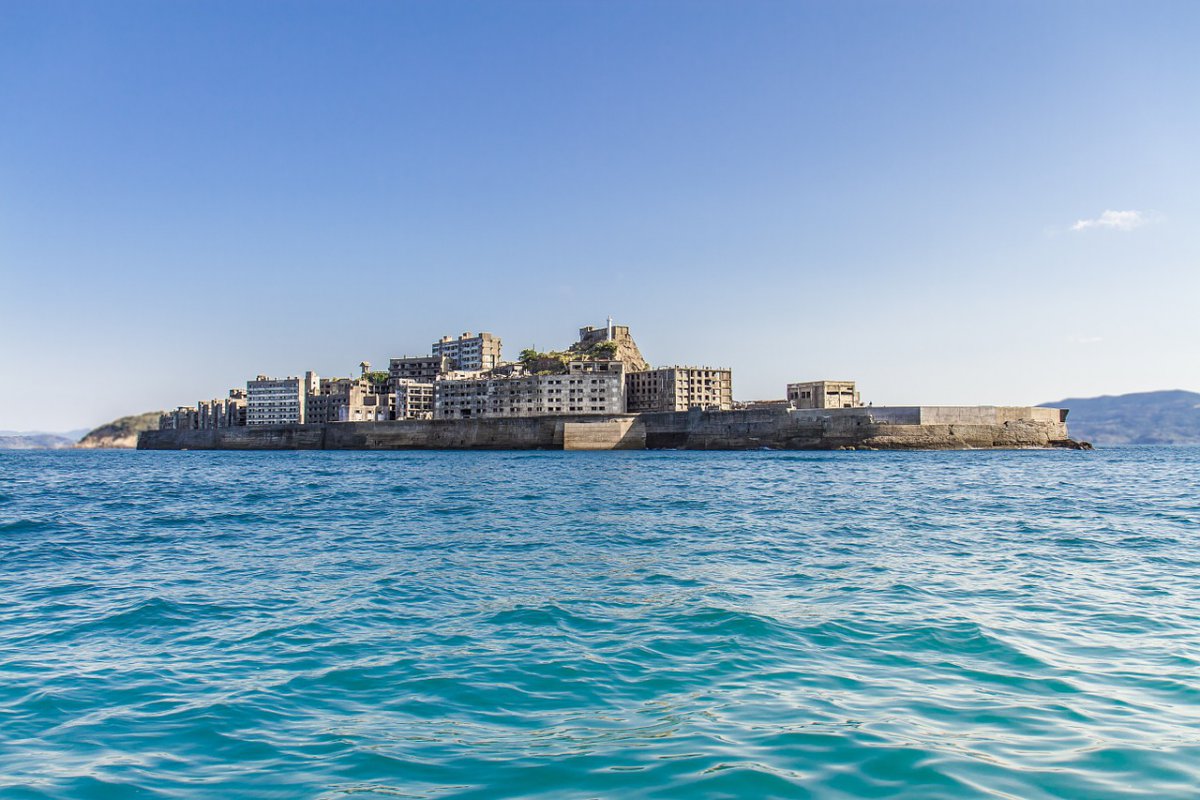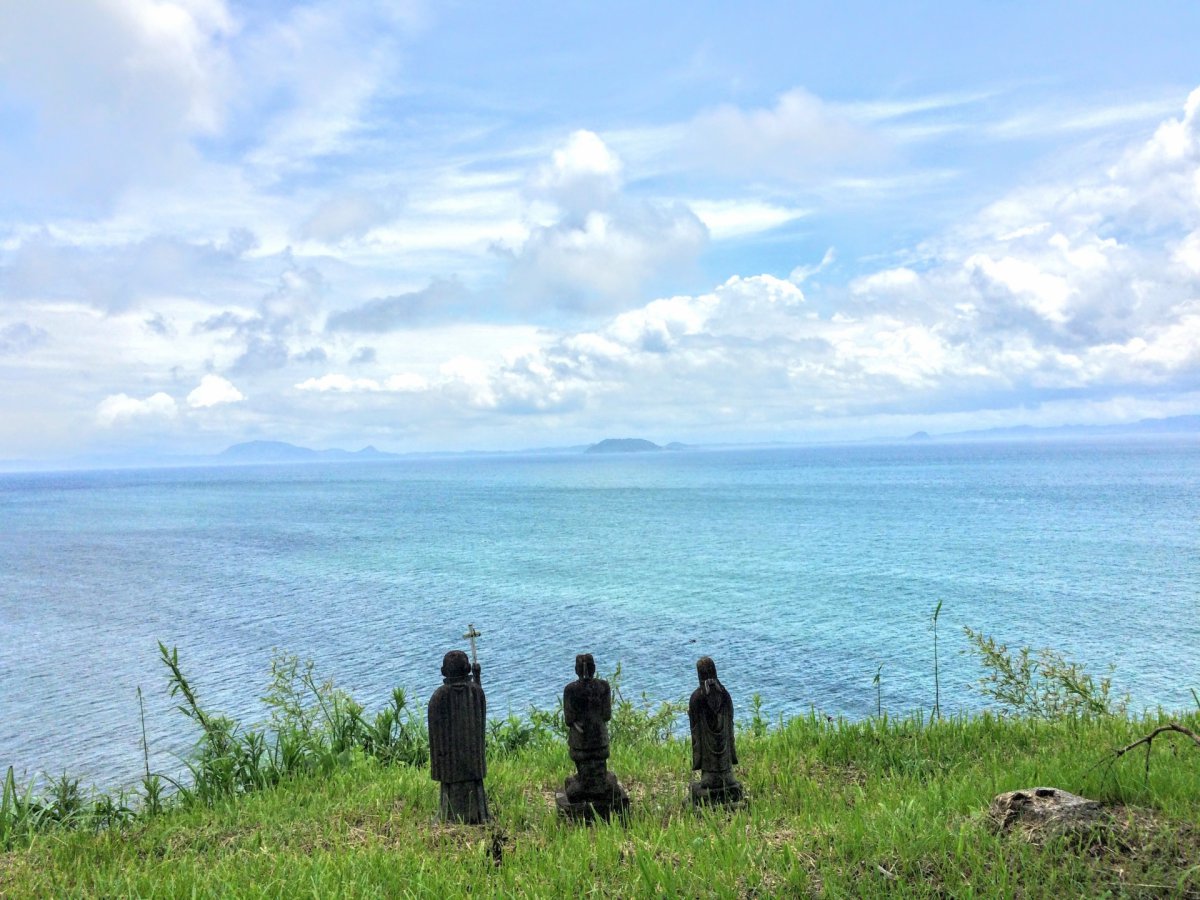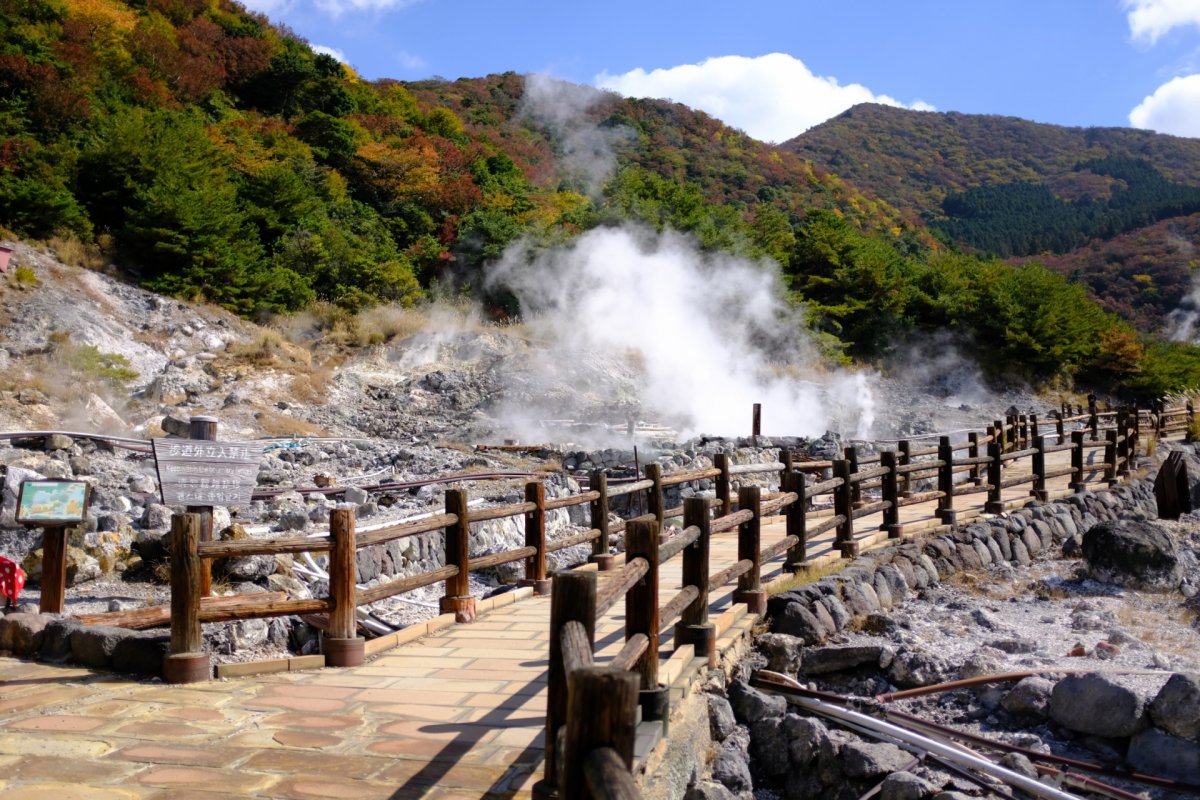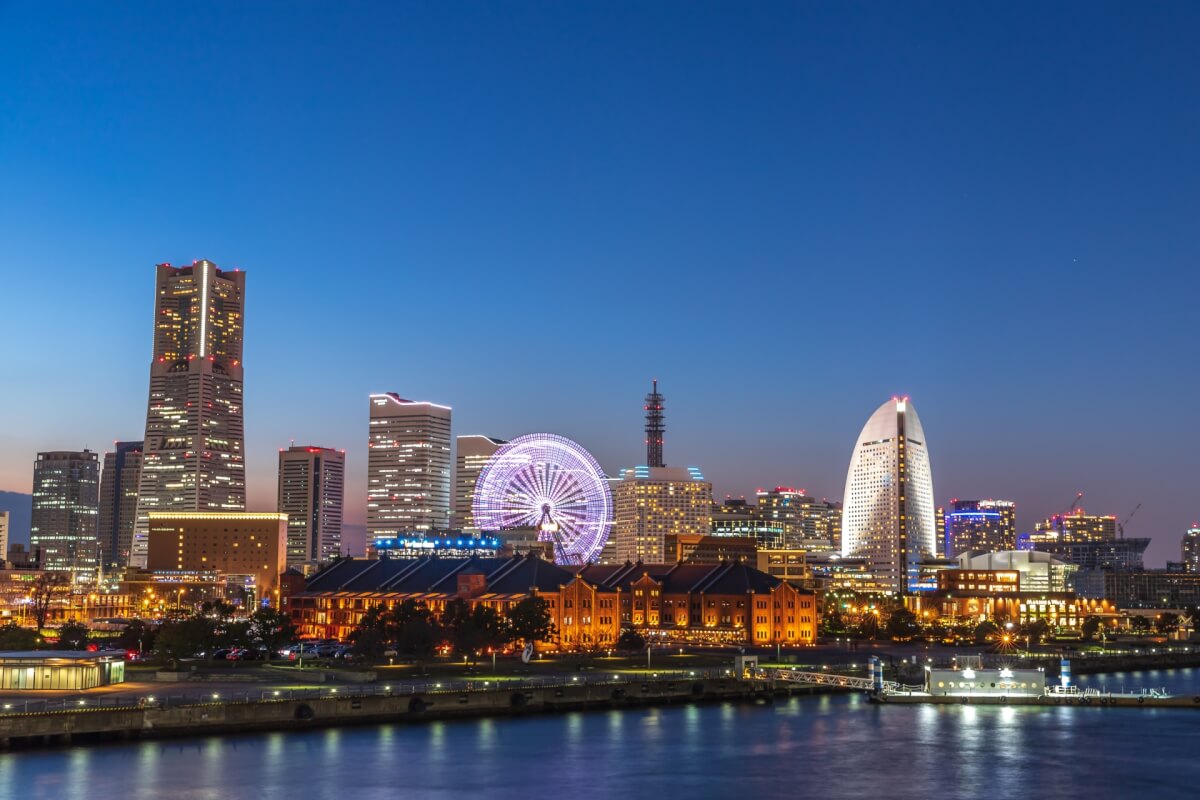Nagasaki prefecture is located on the west coast of Japan’s Kyushu Island. The prefecture, with a capital city that carries the same name, is known for its stunning nature including several volcanoes, forested offshore islands and hot-spring areas. Though, the unique history of the prefecture is what is more widely known.
Short overview of the history of Nagasaki
In the 16th century, other countries from all of the world were doing trade with Japan. However with this international trade, other unwanted influences were also brought to Japan. Especially the colonial and religious influences of Spain and Portugal were perceived a threat to the stability of the shogunate and to peace in Japan. For this reason, the Japanese government activated a policy called Sakoku in 1635. Sakoku, written in Japanese as 鎖国, literally translates into “country in chains” or “lock up of country”. This closed door policy eliminated pretty much all foreign influence for over 220 years. However, during Sakoku the government kept one port open for international trade: Nagasaki port. From this port, some Asian countries and the Netherlands were allowed to continue operating. Because of this you can see some unique international (cultural) influences in Nagasaki.
In addition, a second, tragic event makes Nagasaki also outstanding from many other destinations. Towards the end of World War II, Nagasaki was the second city (after Hiroshima) to be destroyed by an atomic bomb called fat man. The atomic bomb killed an estimated 60,000 – 80,000 people and led to the surrender of Japan.

Today, Nagasaki offers many beautiful, interesting and historically important places and buildings. Here are our recommended places to visit in Nagasaki!
Atomic bomb memorial Peace Park
As mentioned above, Nagasaki was the location where the second atomic bomb was dropped on August 9 1945, causing Japan’s unconditional surrender. The Peace Park was built in 1955 to commemorate the atomic bombing and to wish for world peace.
The Peace Statue, the symbol of Peace Park and Nagasaki, was created by the Nagasaki native sculptor Seibo Kiamura. The raised right hand pointing to the sky depicts the threat of the atomic bomb, and the left hand stretching horizontally symbolizes eternal world peace, while the closed eyes offer a prayer for the repose of the victims’ souls.
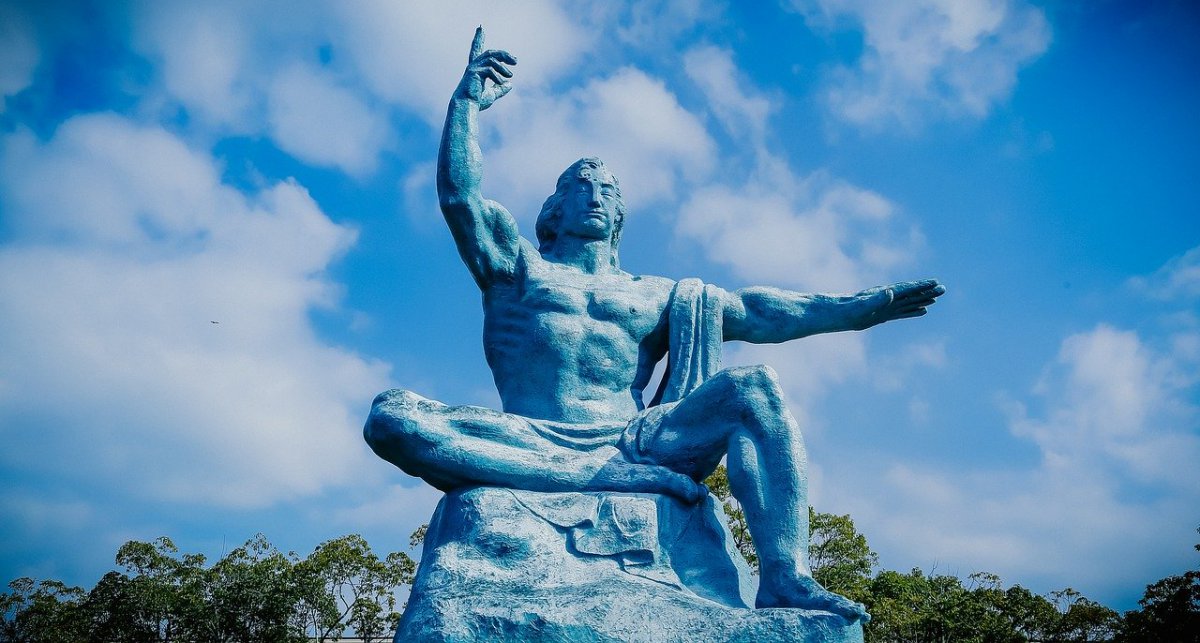
A memorial plate in front of the park’s fountain exhibits a poem written by a child who suffered from thirst in the immediate aftermath of the bombing. The fountain, brimming with water, is an offering to all those who lost their strength before they could reach a single drop of water. Every year on August 9, a Peace Memorial Ceremony is held in front of the statue.
The Peace Park also features the Atomic Bomb Museum which was built to remind people of the tragedy and Peace Memorial Hall for the victims of the atomic bomb.
8.30am – 6.30pm
Admission fee ¥200
How to access the Peace Park
From JR Nagasaki Station, take a tram to Heiwa Koen, the Peace Park is 3-min walk.
Glover Garden
The Glover Garden is an open air museum that showcases several beautiful mansions of the foreigners who lived in the city after Sakoku, Japan’s era of seclusion.
One of the main buildings in the garden is a house of Thomas Blake Glover, a Scottish merchant who assisted in overthrowing the Tokugawa Shogunate who where promoting Sakoku, and had great impact on Japan’s industrialisation. The Glover House is the oldest Western-style wooden building in Japan.
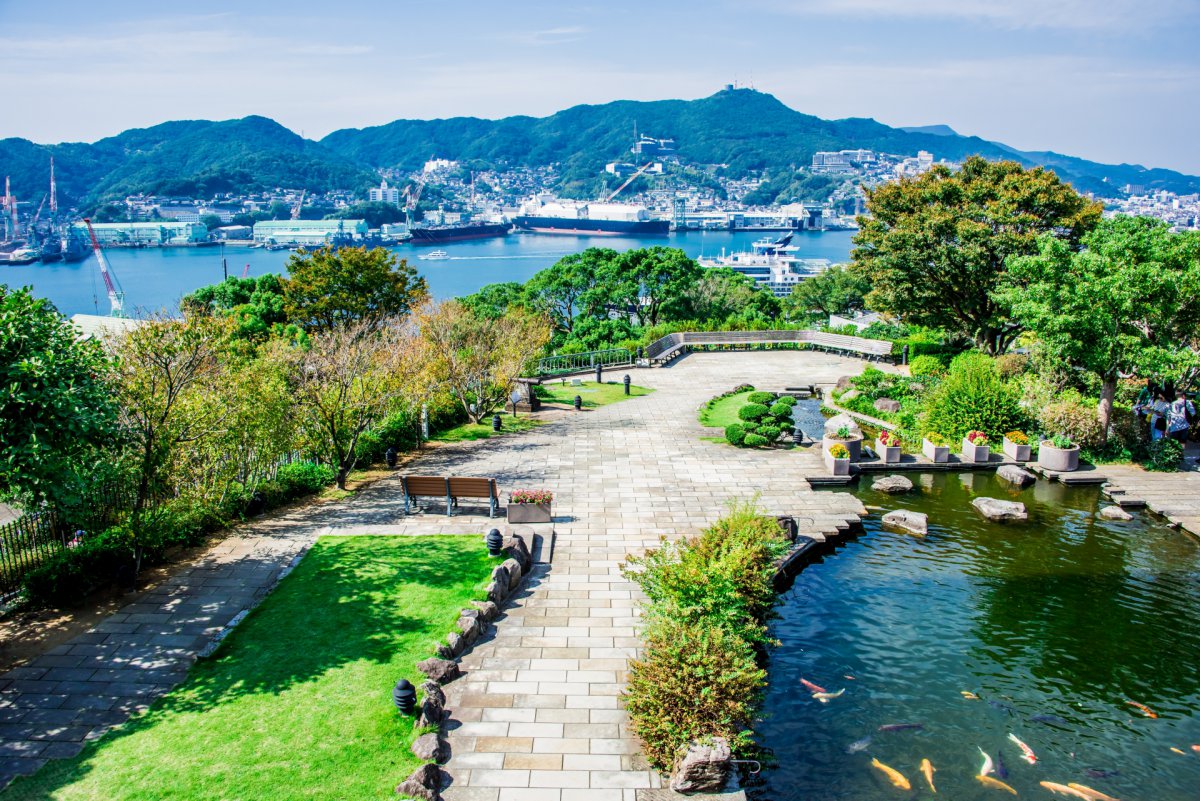
Several Western style buildings were relocated to the garden from other parts of the city and can be accessed. Because Glover Garden is located on a hill, it also offers great views of the city and the harbour.
Glover Garden
8am – 6pm (9.30pm in summer and peak season)
Admission fee ¥620
How to access the Glover Garden
- 5 minute walk from Ouraenshudo tram stop
- There is also a loop bus connecting JR Nagasaki Station West Exit, Peace Park and Glover Garden.
Mount Inasa Observatory
Nagasaki has a lot to offer, and the impressive night scenery is one of them. From the Mt. Inasa Observatory, situated on the peak of Mount Inasa at 333m, you can enjoy the stunning panoramic night views of the city and the harbour. Mount Inasa, in fact claims “to offer one of the best nighttime panoramas in Japan right in the heart of Nagasaki City”. And we have to admit, it is pretty amazing. It goes without saying that during the day the view is also beautiful and on a clear day, the observatory offers views of Unzen in eastern Nagasaki and Amakusa in the neighbouring Kumamoto prefecture.
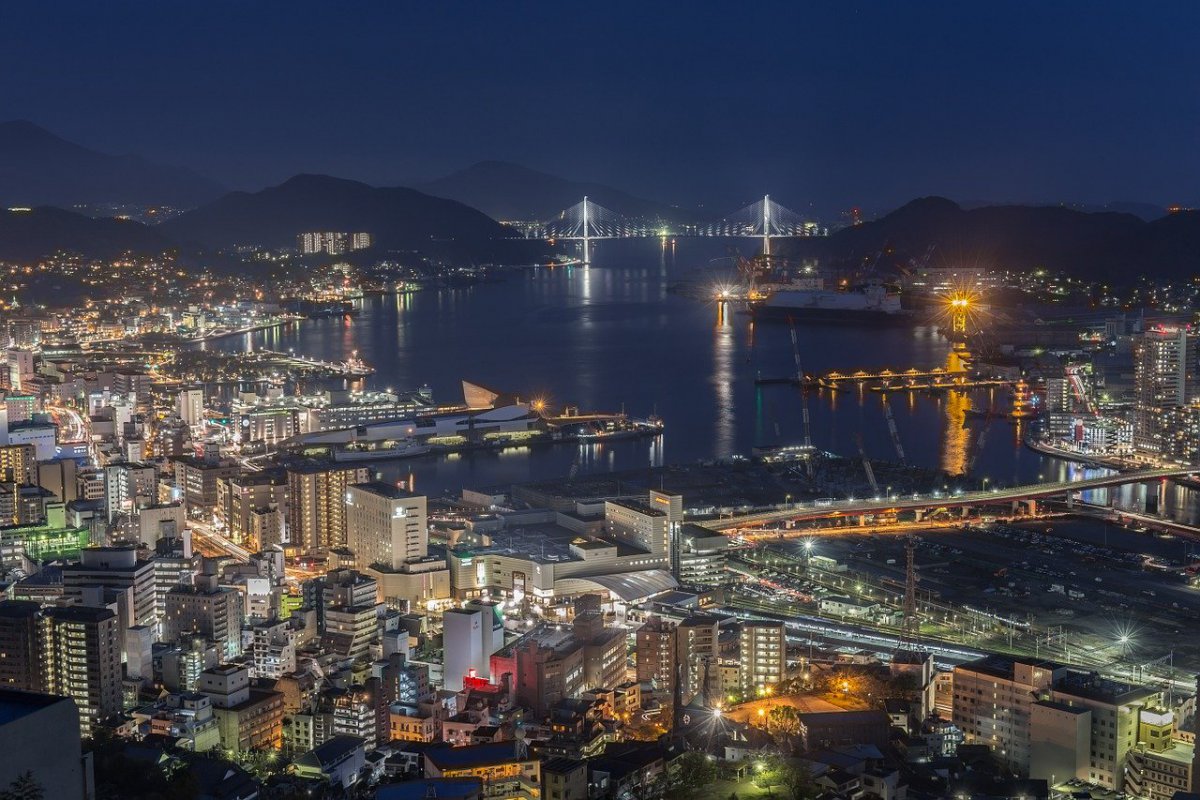
How to access Mount Inasa
To reach the top of Inasa Yama Mountain, you can take the Nagasaki Ropeway. The Nagasaki Ropeway brings you from Fuchi Shrine at the foot of the Inasa Yama Mountain, to the top. Alternatively you can also hike up the mountain in about 50 minutes, the hike also starts at the Fuchi Shrine.
There is a free shuttle loop bus running between Nagasaki station, Fuchi Shrine, and five hotels in Nagasaki’s city center. The shuttle bus runs between 7pm and 10pm and reservations are required. Alternatively, you can take the normal city buses that operate between Nagasaki station and Fuchi Shrine.
Huis Ten Bosch
Huis Ten Bosch is a theme park which recreates a Dutch landscape, including canals, iconic windmills, beautiful gardens and architecture. Climb the famous Dow Tower of Utrecht or visit the Royal Palace. It will have you fooled that you are in the Netherlands itself! At night, the park is beautifully illuminated with lights and fireworks. There are also VR roller coasters and shootings attractions. Huis Ten Bosch also features several hotels, restaurants, cafes, and shops. Even for Dutch people it is a fun day out!
Huis Ten Bosch
9am – 10pm (Can vary slightly, check website for details)
Admission fee ¥7,000 one-day ticket (discounts available, see website)
How to access Huis Ten Bosch
From JR Nagasaki Station, take JR Seaside Liner Rapid or Local Train to Huis Ten Bosch Station (approximately 1.5 hours).
Hashima (Gunkan-jima or Battleship Island)
Hashima is an abandoned island located about 20km out of Nagasaki Port. From the late 1800s until 1974, the island served as a coal mine. As soon as the industrial mining began, the island was purchased by Mitsubishi Corporation and as production increased, more and more people started to live on the island. In 1960s, as many as 5,000 people were living on this small island, resulting in the highest population density in history recorded worldwide.
However in 1974, as the coal reserves nearing depletion, the mine was closed and all the residents left the island, abandoning the island with all the buildings. Due to the danger of collapsing structures, Hashima was closed to the public until 2009. However, after a boat dock and observation decks were constructed, people can visit the deserted island with Japanese speaking tour guides.
How to access Hashima
You need to join a tour to enter on Hashima. Tour boats are operated by several companies and departs from various location in Nagasaki Port.
Goto Islands
Goto Islands covers five main islands and 147 small islands that are famous for stunning views of great nature and the beautiful ocean as well as their history related to christianity. While christianity was strictly banned in Japan from early 1600s until middle 1800s, “hidden” christians settled on the island due to their remoteness. Therefore, you can find several churches located across the islands.

Fukue Island
Fukue Island is the largest and most populated island among Goto Islands. There are historical churches and temples, beautiful beaches, and mountains which offers breathtaking views of the island, ocean and some of the neighbouring islands. There is a selection of hotels and restaurants and shops near Port of Fukue.
Access to Fukue Island
By air, there are several flights per day from Nagasaki Airport to Goto Tsubaki Airport on Fukue Island (30 min).
By ferry, there are several high-speed boats (90 min) and car ferries (3 hrs) from Nagawaki Port to Fukue Port.
Shimabara Peninsula
Located in south east of Nagasaki Prefecture, Shimabara Peninsula is famous for hot springs and beautiful nature. The island was formed by volcanic eruptions of Mount Unzen, which stands in the center of the peninsula and it still “active” – there have been some volcanic eruptions in recent years.
Mount Unzen is part of the Unzen Amakusa National Park. The mountain is covered with pink azaleas in spring, fresh green in summer and red and yellow in autumn. There are ropeways that take you part way up to the mountain and it is also a popular place for hiking.
Unzen Onsen is the hot spring resort on the slopes of Mount Unzen. There are several hot spring fields from which the local resorts get their thermal water for their baths. You can follow the path through jigoku (hell) where acidic gasses hiss and sulphur water bubbles up from the ground.
How to access Shimabara Peninsula
The peninsula is well accessible by boat and train from Fukuoka, Nagasaki (airport) and Kumamoto. Depending on your starting point you can even use your JR Pass.
Hirado
Hirado is an island in northwest Nagasaki prefecture. During the early Edo period, the island served as the trading post of the Dutch East India Company, before the post was moved to Dejima. Hirado port has been an international trading port for centuries, hence you will easily spot some international influences and fusions.
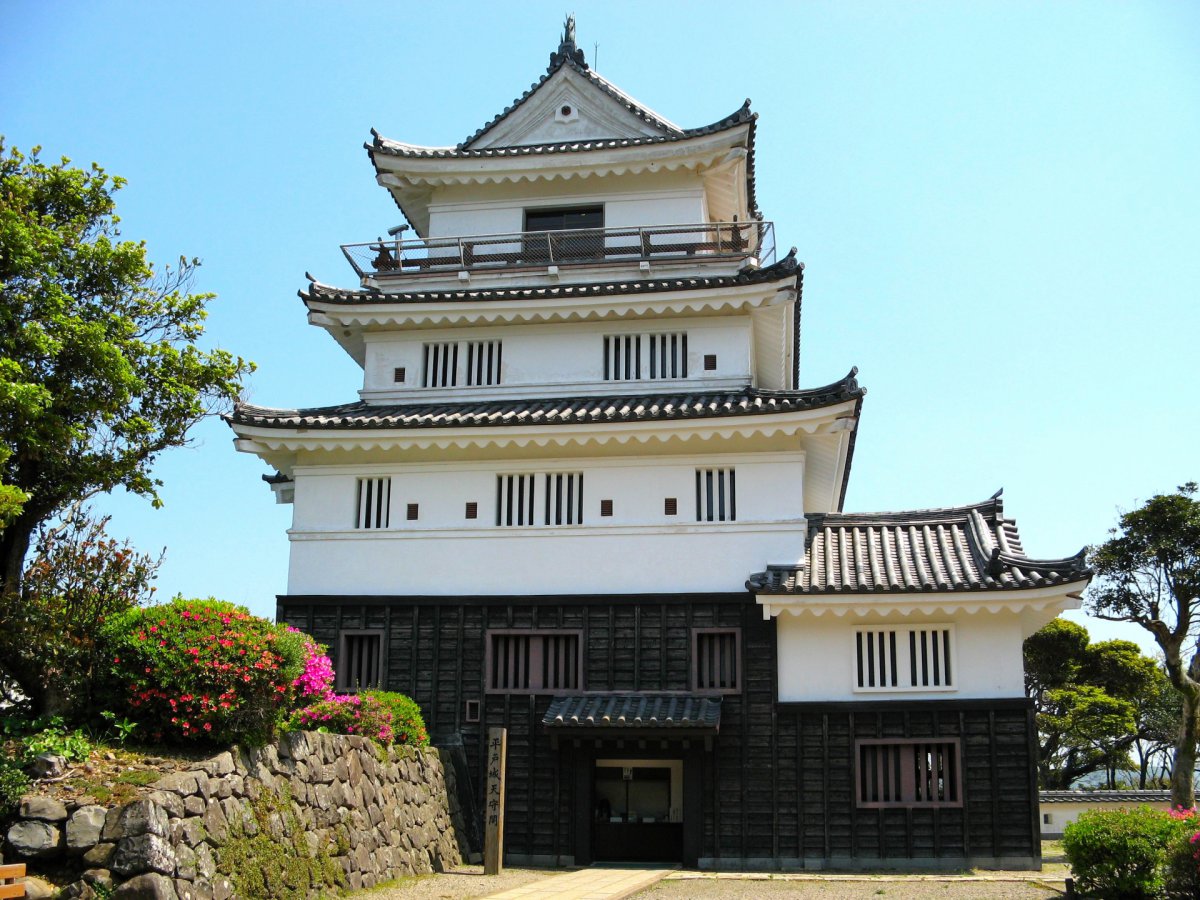
One of the top attractions in Hirado is Hirado Castle, also known as Kameoka Castle. Standing on a hilltop, it offers panoramic views of Hirado Ohashi Bridge and several churches in the city. The castle was built in 1718, however, it was largely destroyed over the centuries and today, Kitakoguchi-mon Gate and the Tanuki Yagura watch tower are the only original structures still standing. The rest of the buildings were constructed in 1960s.
How to access Hirado
- From JR Nagasaki Station, go to Sasebo by either express bus (1h 30m) or JR Seaside Liner (1h 20 min).
- From Sasebo, take direct bus from Sasebo Station to Hirado (90 min).
Dejima
Dejima is a man-made island constructed in 1639 to isolate Portuguese residents in an attempt to control their missionary activities. It was the only port in Japan that was open to trade with other countries during sakoku. In 1639, after the Portuguese were banned, the Dutch Trading Station, formerly located in Hirado was moved to Dejima. Many of the architectural highlights has been reconstructed since 1951 to recreate the atmosphere of 1600s. Present day, Dejima is no longer an island due to reclaimed land, but turning the place back into an island is the goal of the island.
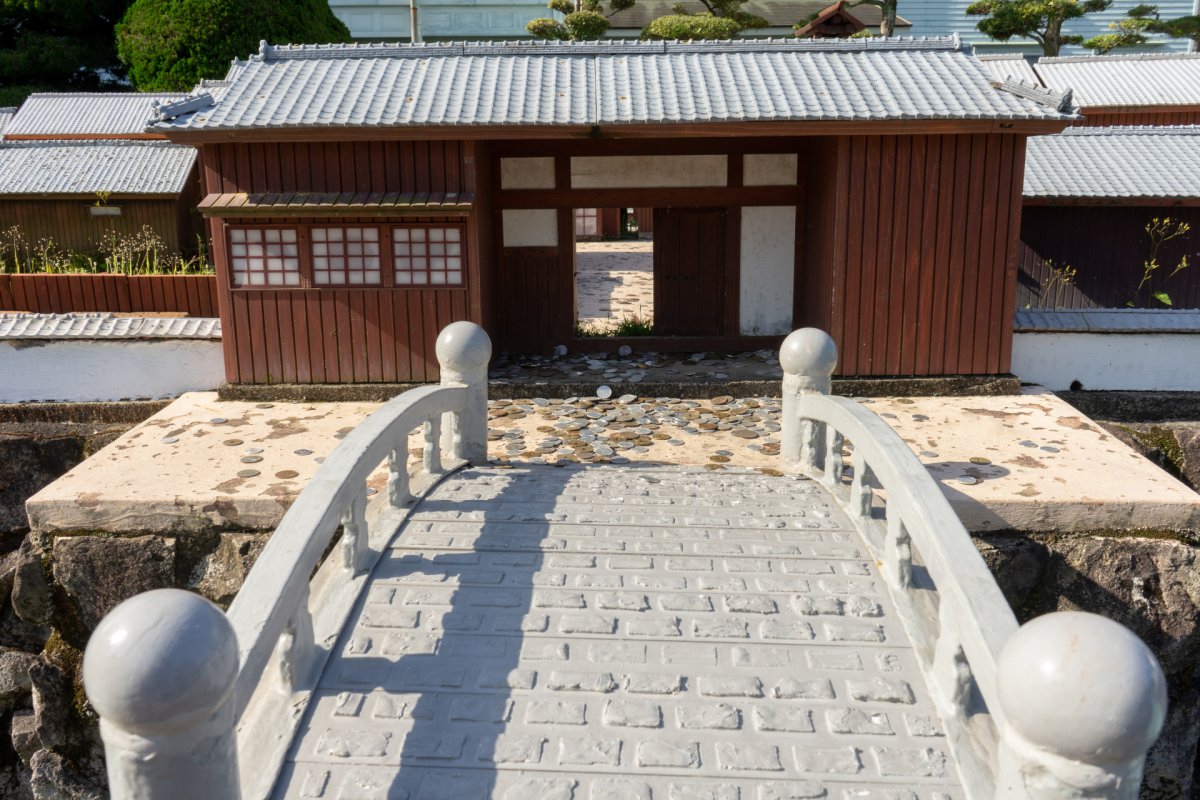
Dejima island
8am – 9pm (after 6pm, Dejima can be entered only via the Omotemonbashi footbridge)
Admission fee ¥520
How to access Dejima
- From Nagasaki Station take tram number 1 to the Dejima tram stop
Where to stay in Nagasaki
When you prefer to stay in the city of Nagasaki, we recommend picking a hotel that is close to a station. The city is very easy to get around with the colour-coded trams.
- Hotel Belleview Nagasaki – Reasonable priced rooms, good location for Dejima, the Gunkanjima pier and Glover Gardens
- Ooedo-Onsen Monogatari Nagasaki Hotel Seifu – Luxurious modern Japanese ryokan in the mountain area.
For a more special experience, outside of the city we recommend the following.
- Hotel Okura JR Huis Ten Bosch – luxury experience in the theme park Huis Ten Bosch
- Hirado Guesthouse Kotonoha – a hostel-like guesthouse on Hirado Island.
Japan Wonder Travel Tours
Join our 1-Day Highlight Private Walking Tour to explore Nagasaki City, including Gover Garden, Dejima, Peace Memorial Park and The Megane Bridge. If you want to visit other places like Mt.Iansa or Gunkanjima island, we can also arrange the guided tours for you!
How do you feel about visiting Nagasaki prefecture? In Nagasaki, due to its unique location and history, there are many interesting places to visit and you can learn a lot about history of Japan and the international influences. Will you add Nagasaki to your to-go-list?
Follow us on Instagram or Facebook for more travel inspiration. Or tag us to get featured!
Happy travelling!
This post may contain some affiliate links. When you click through and make a purchase we may receive some commission, at no extra costs to you.
